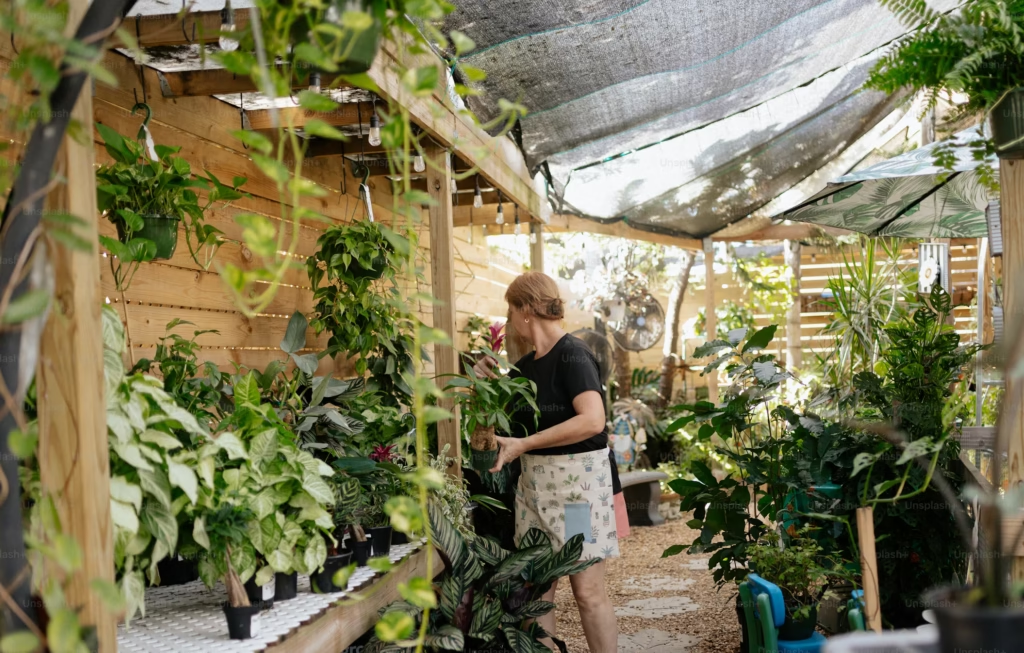
How to Use Plants to Improve Your Home Office
Creating a productive and healthy home office environment involves more than just choosing the right desk and chair. Adding plants to your workspace can significantly enhance your productivity, mood, and overall well-being. Houseplants not only purify the air but also create a sense of tranquility and connection to nature. Below are some effective ways to incorporate plants into your home office and boost your productivity and mental health.
1. Choose the Right Plants for Your Office Space
Select houseplants that are easy to care for and suitable for indoor conditions. Here are some popular options:
- Peace Lily (Spathiphyllum): Known for its air-purifying properties, it’s perfect for reducing indoor pollutants and creating a calming atmosphere.
- Snake Plant (Sansevieria): A low-maintenance plant that thrives in low light and purifies the air.
- Pothos (Epipremnum aureum): Also known as devil’s ivy, this resilient plant can survive in various light conditions and is easy to care for.
- Fiddle Leaf Fig (Ficus lyrata): Adds a touch of greenery and is visually appealing, though it requires good light.
- Rubber Plant (Ficus elastica): Perfect for offices with bright, indirect sunlight and low humidity.
- Spider Plant (Chlorophytum comosum): A robust air-purifying plant that adds a touch of greenery.
- Zamioculcas (ZZ Plant): Tolerant of low light and infrequent watering, making it ideal for a busy office.
2. Use Large Statement Plants for Impact
If you have enough space, opt for larger statement plants like a fiddle leaf fig or rubber plant. These can act as natural dividers, creating separate areas within your workspace and making the environment feel more relaxed and private. Large plants can also bring a sense of calm and focus to your office.
3. Opt for Low-Maintenance Plants
Busy workdays can make plant care seem daunting, so choose low-maintenance varieties like snake plants, ZZ plants, or pothos. These plants thrive with minimal effort, requiring watering only once a week or less, depending on the season and humidity levels.
4. Place Plants Near Your Desk
Position plants close to your desk for easy access to greenery while working. This not only provides visual interest but can also boost creativity and focus. A small pot of herbs like mint or basil can even double as a reminder to take short breaks and step away from your computer.
5. Consider Hanging Plants or Shelves
If space on your desk is limited, consider hanging plants or installing shelves on your walls. This allows you to add greenery without cluttering your workspace. Plants like pothos or ivy can cascade beautifully from a hanging pot, making a striking visual impact.
6. Add Air-Purifying Plants
Houseplants like peace lilies, spider plants, and snake plants are known for their air-purifying abilities. They can help remove toxins from indoor air, such as formaldehyde and benzene, which are often found in office supplies and electronics. This can lead to a cleaner, healthier workspace.
7. Use Plant Containers as Decor
Select decorative pots that complement your home office’s aesthetic. Use containers made of materials like ceramic, metal, or wood that align with your overall decor. This adds a touch of sophistication and ties the plants into your office’s design scheme.
8. Consider Scented Plants
Certain plants like lavender, rosemary, or mint can boost mood and concentration with their pleasant scents. Place a pot of rosemary near your desk to create a calming environment and possibly improve focus.
9. Position Plants in Sunlight
Place plants near windows to make the most of natural light. Most houseplants prefer indirect sunlight, so avoid direct sunlight if possible. If your office doesn’t have windows or receives minimal natural light, opt for low-light plants like ZZ plants or snake plants.
10. Create a Green Corner
If space allows, designate a ‘green corner’ in your office. This could be an area filled with multiple plants or a mix of large and small plants. Having a dedicated space with greenery can help reduce stress and improve mood while you work.
11. Add Plants to Your Shelving Units
Place small potted plants or terrariums on your shelving units or bookshelves. This not only adds visual interest but can also make your office feel more cozy and inviting. Consider arranging plants of varying heights for a more dynamic display.
12. Use Plant Stands for Display
Use plant stands or elevated shelving units to display larger potted plants like fiddle leaf figs or rubber plants. This allows your plants to stand out and occupy vertical space, making your home office feel organized and tidy.
13. Incorporate Plants in Your Office Furniture
If you’re redecorating, consider furniture that includes built-in plant holders or shelves. A desk with an integrated planter or a plant-filled credenza can seamlessly tie your workspace and greenery together.
14. Choose Plants with Different Leaf Textures
Using plants with diverse leaf textures can add visual appeal to your home office. Varieties like ferns (fine and delicate), pothos (lush and flowing), or rubber plants (large and broad) create a sense of depth and interest.
15. Water Feature or Mini Fountain
Consider adding a small water feature like a mini fountain or table-top pond nearby. Water features can increase humidity, purify the air, and create a calming background sound, all of which can enhance your productivity.
Conclusion
Bringing plants into your home office can help create a more inviting, healthy, and productive space. From air-purifying benefits to visual appeal, houseplants offer a wide range of benefits. Select low-maintenance plants that suit your lighting conditions and consider adding them strategically to boost your mood, focus, and overall well-being while you work. Incorporate a mix of sizes, textures, and heights to achieve a balanced and refreshing green space within your home office.



